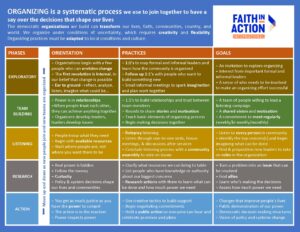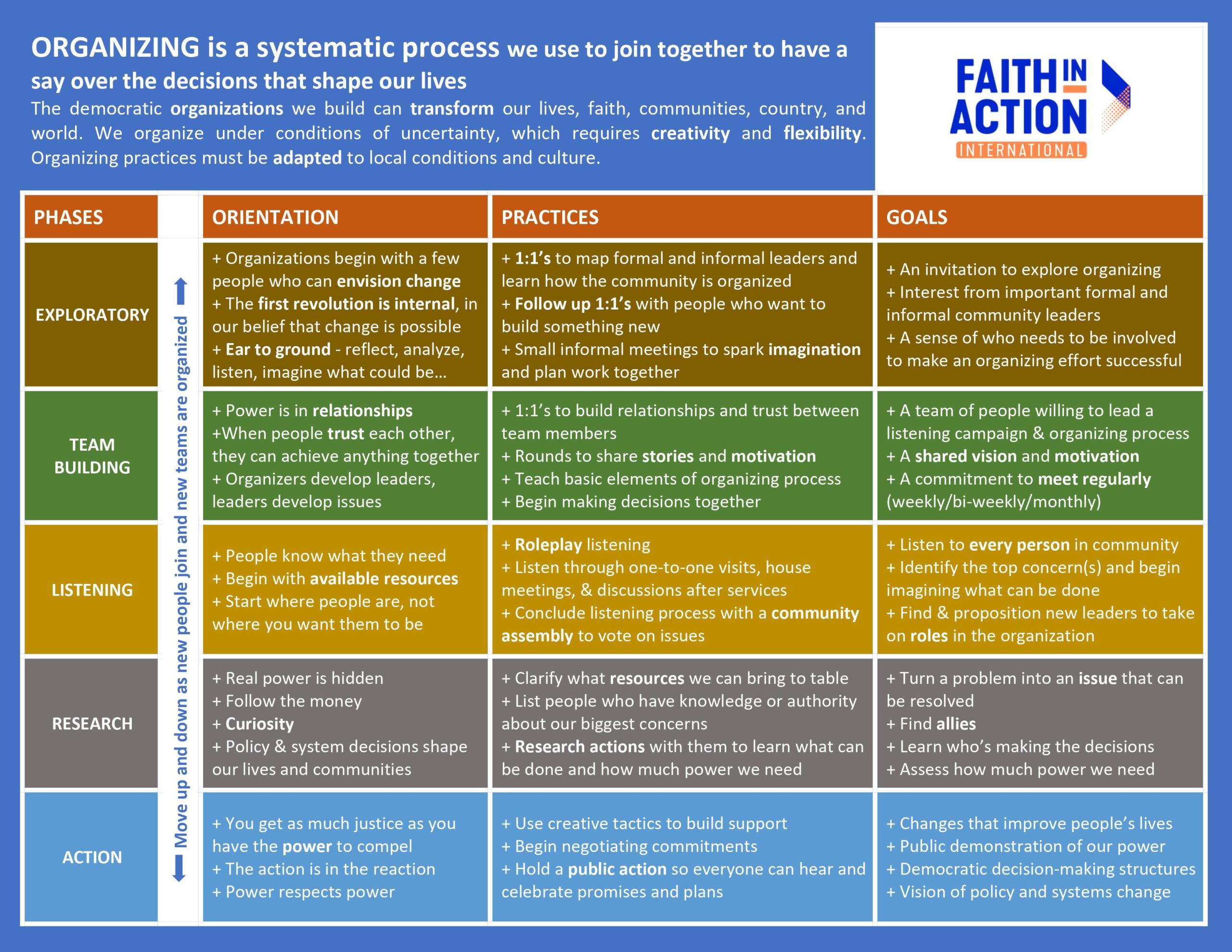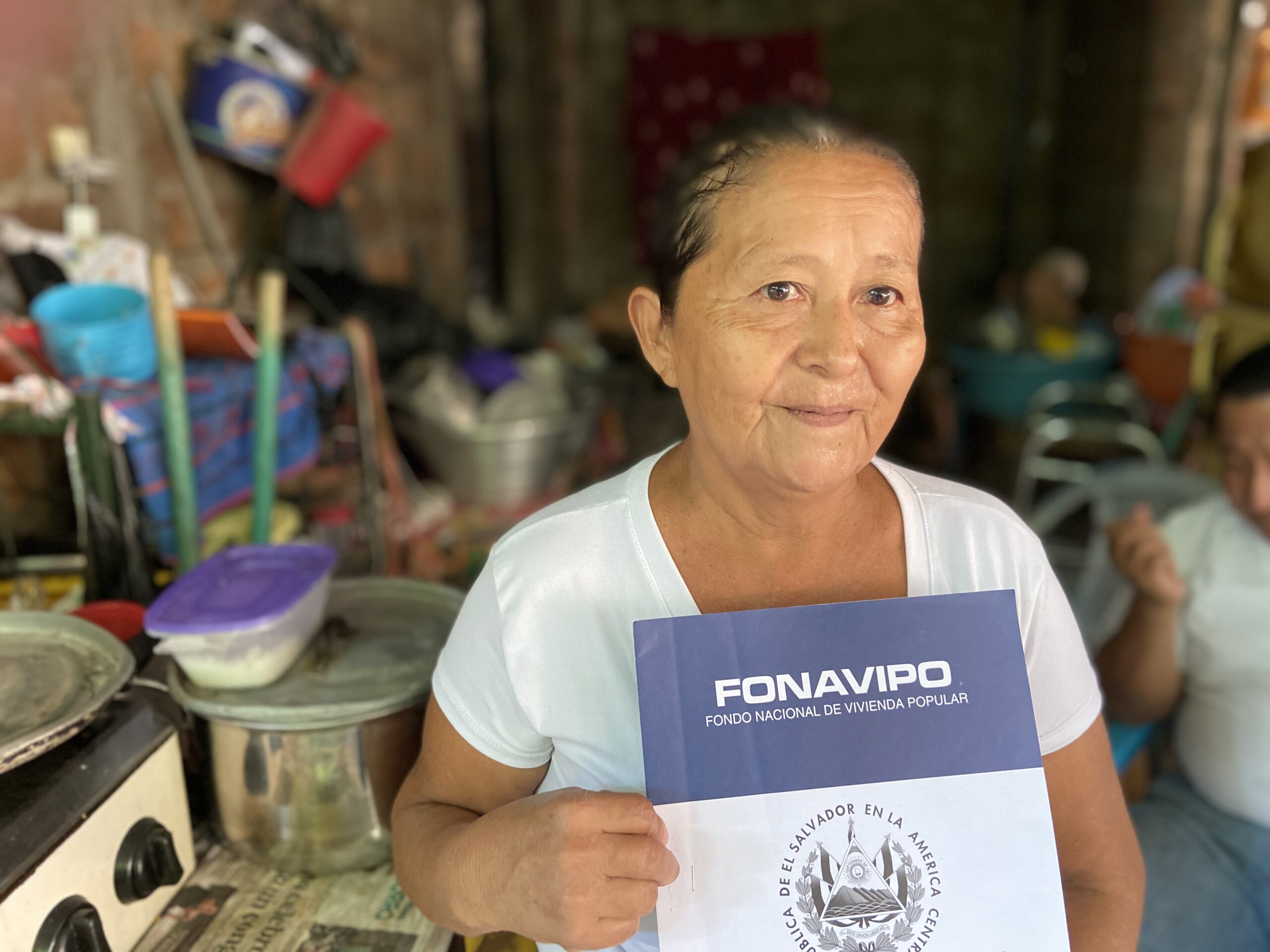With so many problems facing the world it's not easy to figure out where to start making change. Good grassroots community organizing begins with people working together locally…
Five phases of grassroots community organizing
Grassroots community organizing is a great way for people to solve local problems and fight injustice. But how do you get started and stay on track?
While we know instinctively how to join together to create change, it can be easy to get sidetracked or take shortcuts.
Here’s simple tool that explains five phases of organizing – exploring, team building, listening, research, and action – that any small group of people can use to begin transforming their community.

Tens of thousands of people worldwide are using these simple practices to win better education, health care, jobs, and access to water and have a say over the decisions that shape their lives.
-
Exploratory phase
Social change begins with a few people who trust each other and can imagine things being different. The first revolution is internal, in our belief that change is possible. Before jumping into building an organization, slow down and map your environment. Who are important formal and informal leaders? What have people tried to do in the past to create change? Why are we building an organization, and what would success look like? Small informal meetings and 1:1 conversations can help clarify these questions and identify others who want to be involved.
-
Team building
Community organizing relies on small groups (teams) that meet regularly – ideally every week! The key is to take the time to build trust. The best way to build trust is for people to share their stories with each other. When you know a person’s story and what motivates them, you can take risks together. Ask people to share an experience or person that motivates them to get involved in making change. Once you have a team of people (perhaps a dozen) who share a common vision, trust each other, and are ready to meet regularly, you can get to work organizing a community.
-
Listening
People know what they need. In grassroots community organizing, we say: start with people where they are, not where you want them to be. Taking the time to listen shows respect. It is a powerful way to increase participation. Your team needs to be clear about the community or constituency you’re trying to organize. We call this a base. A base can be a neighborhood, a school, a parish or other faith community, or a workplace. The key is that you have the possibility of making a list of every person and family who lives in the base and talking to everyone.
-
Research
Once your team listens to every person in your community or base, take the time to analyze what you heard. Call a community assembly to report on the results of the listening campaign and vote on a top priority for action. Then invite new people to participate in research meetings with public officials and others with expertise about the issue. If the community identifies access to primary school for students from poor families, you could have research meetings with local and regional educational officials. If the community prioritizes helping farmers adapt to climate change, they could do research meetings with agronomists and government agriculture officials. Make a list of officials and resource people and meet with them to understand who has the power to resolve the issues raised by the community.
-
Action
Holding a large public meeting and bringing officials to the community to make public commitments is a hallmark of grassroots community organizing. Officials are more likely to keep their commitments if they make them at large public events. Public actions can include testimony about the problem, results of listening campaigns and research meetings, and commitments from public officials. Public actions show that the organization represents a large base and can generate media coverage and awareness about the organization’s work.
-
BONUS: Reflection
People who participate in grassroots community organizing should be able to say that as a result of their active leadership, (a) their lives are better; (b) their community is better organized and has more power; and (c) they see themselves and the world differently. For organizing to transform people, communities, and countries, it is important to take the time to reflect and evaluate after important activities. How do we feel now that we’ve gone through a cycle of organizing? How do we see ourselves and the world differently? What other changes do we want to make? How much more power do we need? Reflection also helps local efforts join together to change larger systems and structures. You can read more about that process here: Six Lessons for Organizing to Change Policies that Perpetuate Poverty.
Download the five-phases chart here: Organizing Process @ Faith in Action International
Sign up to receive resources and news about grassroots community organizing.


